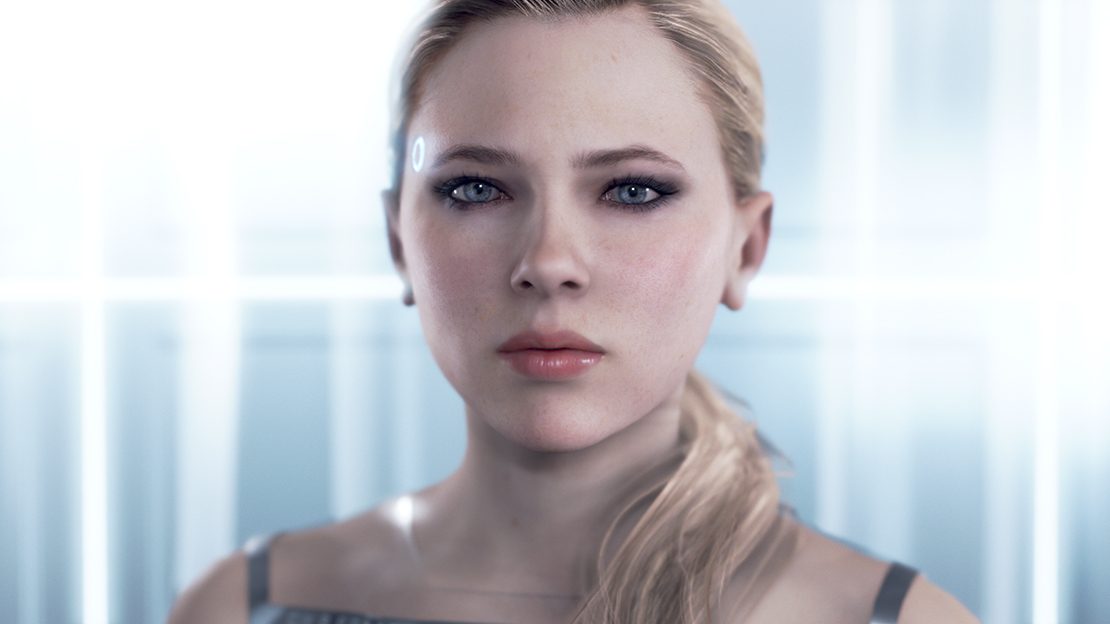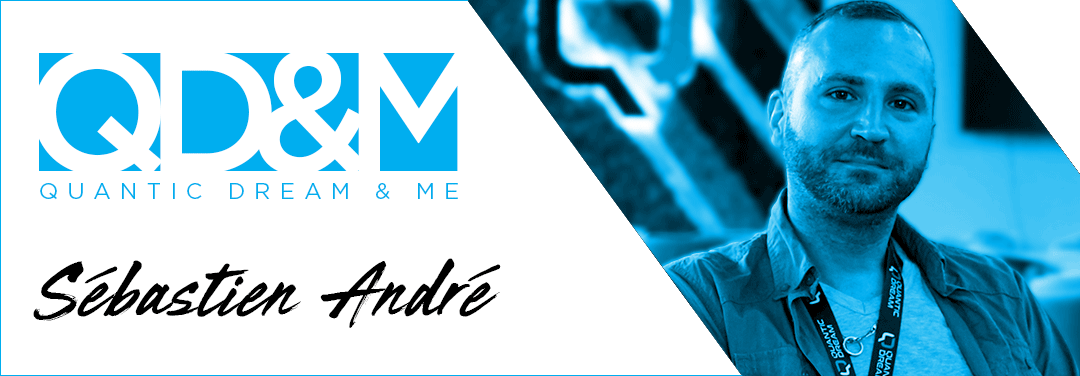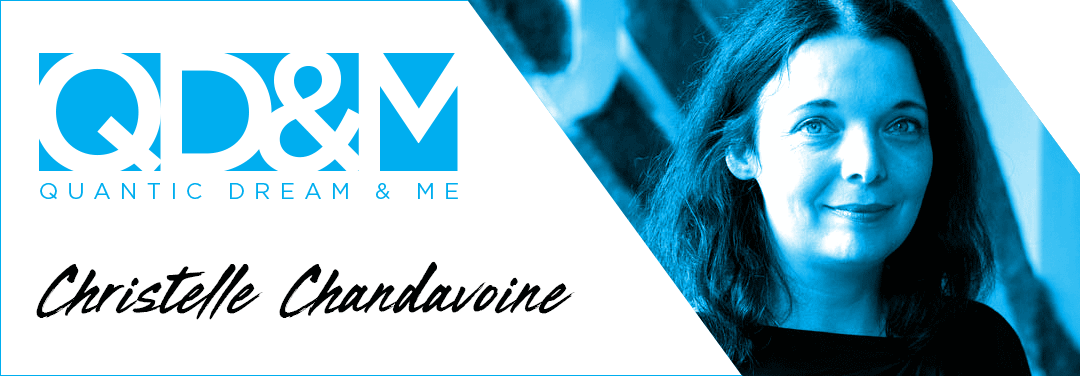HOW CHLOE BECAME HUMAN
According to Detroit: Become Human’s lore, the first RT600 android ‘Chloe’ was built in 2021 by Elijah Kamski; this model is also the very first to pass the Turing test, meaning that it can mimic human behavior perfectly, tricking us into believing it’s a real person rather than a machine. In the game’s universe, what makes Chloe special might be the fact that she is the first one you meet, through the interactive menu, and she’s also at the center of a key moment in the story. And finally, she brings a sense of closure, when asking the players an ultimate choice to make at the end of their adventure, so it makes perfect sense to let her shine here!
With all that said, we wanted to pay her a well-deserved tribute by sharing our little production secrets. Furthermore, we have gathered some fascinating data through her famous survey, with millions of answers from all over the world. Of course, these answers are fully anonymous, and only the country where the game is played is known to us, but still, it’s an awesome experiment we wanted to share with you!
Editor’s note: this blog post is updated weekly with new content, all through summer 2021.
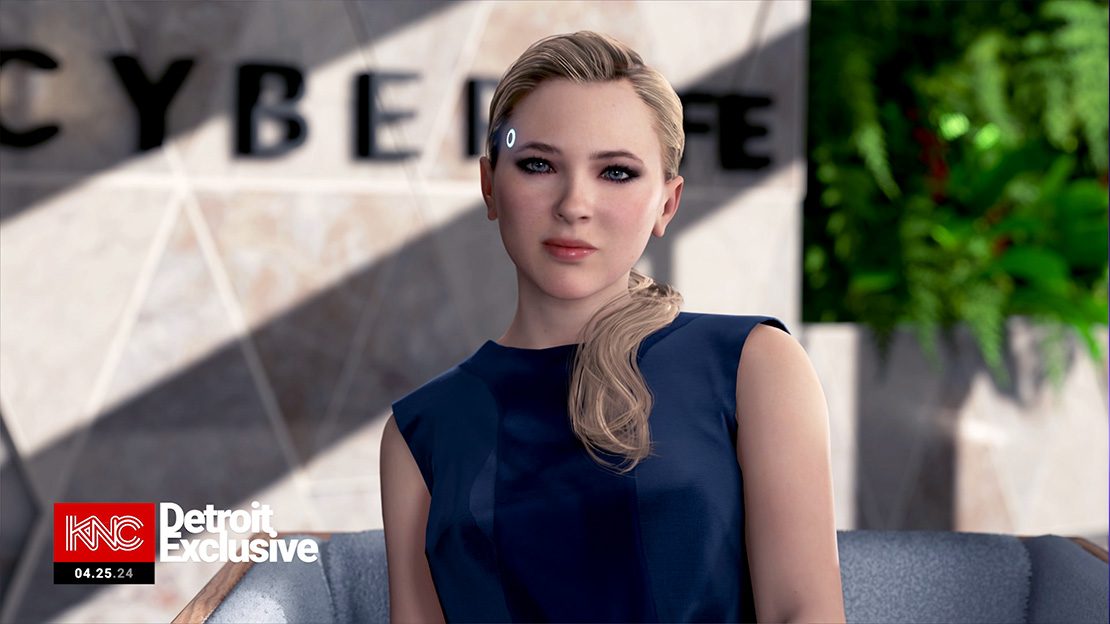
ABOUT HER PERSONALITY
David Cage – Writer and Director
At the end of the development, we started wondering how to make the main menu special? We gave Chloe a spot and tried to make her “intelligent”, one of the ideas being to make her aware of the environment. We knew, for example, that we had access to the console’s clock, so we could know the day and time of connection, and then there was also information about the country. So, we started writing texts, in case someone launched the game at Christmas, New Year’s Eve, July 14th in France, or July 4th in the USA… And one thing leading to another, we made this menu more complex so that it reacted according to the day of the week, the time since the last connection, and finally according to what we were doing in the game as if it was also aware of our choices. We created a behaviour that emulates some form of “consciousness”, just by multiplying the script’s entry points, depending on conditions and variables. And we shot a LOT of lines to cover as many cases as possible! Note that all this was done between the Alpha and Beta versions of the game, in other words, very late in the development.
And finally, we thought that we needed to give a real narrative, with a sense of closure, so we imagined the final dilemma: would the players agree to let Chloe go, or would they prefer to keep her, even if it meant erasing her memory? We realized that a large majority of people had let her go, which showed that we had succeeded in creating an emotional stake around her; but many also complained that Chloe had really disappeared forever! So, we made a patch to allow her to come back after a while, anyway.
And about choosing Chloe specifically for this interactive menu, it’s because we thought that she’s a kind of basic model, a fairly common android. It was also interesting to have a character whose model exists in the game, and then we also thought that Kamski probably had a special attachment to her.
ABOUT HER DESIGN
Thierry Prodhomme – Character Art Director

Chloe’s creation is linked to Kamski’s scene; before this moment we only meet androids calibrated for specific tasks in society, but here we discover that Kamski has also created models for himself, who are more like companions. The first point I had in mind for Chloe’s look is that we’re in Kamski’s universe, very design-oriented and the opposite of the very codified approach we’ve seen so far, with the famous armband for example. We removed that in favour of a more contemporary outfit, as Chloe should not stand out in this particular universe, so the contrast was needed. I wanted to bring back a certain elegance in her look, so that the first time she opens the door to Connor and Hank, she’s unsettling so that you wonder if she’s Kamski’s companion or another android. And I also wanted her to be barefoot, to show that she was both elegant and comfortable, at home; “at home” is an abstract concept for an android. I wanted to bring these impressions from the beginning of the design.
The second element is that I didn’t want something very manufactured, there’s this chic and refined side inspired by 70s haute couture, a classic vision of femininity, in the end, we stay in the sobriety of lines and materials. The idea was to show that she was at home, whereas the concept of property has no meaning for androids!
For the intro scene, the questionnaire, I wanted something modern, immaculate, almost surgical; a very soft, very calm, reassuring universe, like in a dream. With that in mind, I added something a bit high-tech to her outfit, less personal. It’s more like a receptionist, who comes to reassure visitors, there’s a manufactured product aspect. That said, there’s also a slightly seductive side if you compare it to the scene at Kamski. But in the two versions of Chloe, I didn’t play on the make-up, I wanted to remain natural, that’s part of the codes: there’s no notion of personalization, so it also goes through the haircut; a clean, natural design, without frills, both effective and reassuring.
ABOUT HER FACE AND VOICE
Benjamin Diebling – Shooting Director
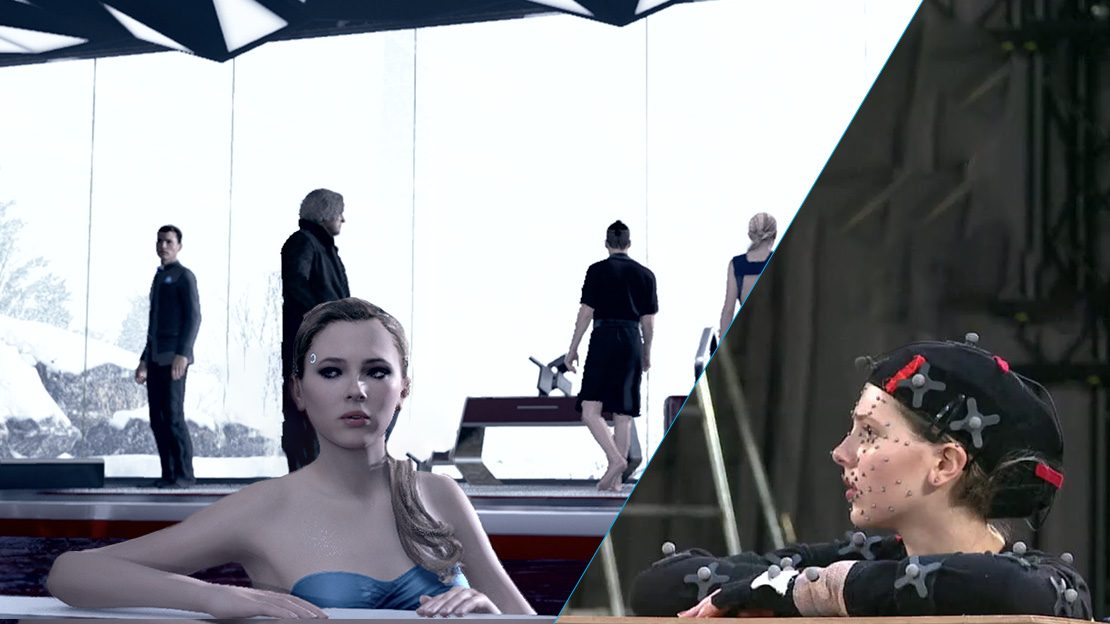
Chloe is really revealing about the secrets of making a game like Detroit: Become Human. She exists in several versions, played by several actresses: from the short film released before the game’s release to the scene at Kamski’s house, then to the game’s home menu, not to mention various promotional videos released afterward.
The first actress who plays her, and who is also the one who lends her features to the character, is Gabrielle Hersh; she shot the short film and the scene in Kamski with us in 2015. But she was no longer available to shoot the intro menu in 2017, even though the challenge represented by this menu was already quite important! There was an astronomical amount of text to be shot, and the interpretation had to be impeccable as this character would be greeting the players at every game. And there had to be a slight evolution in this interpretation so that we would feel closer and closer to her as the game went on; let’s not forget that the idea of this menu is to represent the humanization of androids. In the end, it was Barbara Scaff who took over from Gabrielle Hersh, and that was obviously a technical challenge for the facial animation, but also an artistic challenge since the change of actress had to be invisible to the audience.
And the last memory I have from a creative point of view with Chloe is when Quantic Dream was offered a space at the [wax museum] Musée Grévin in Paris. Quickly the idea came up to have inside this space videos animated by Chloe, to present the universe of Detroit: Become Human. And we had to change the actress again, this time because we had to shoot in French. So, we did a new casting by choosing – drum roll – Kara’s double!
ABOUT HER ANIMATION
Yann Gaborieau – Lead Facial Animation
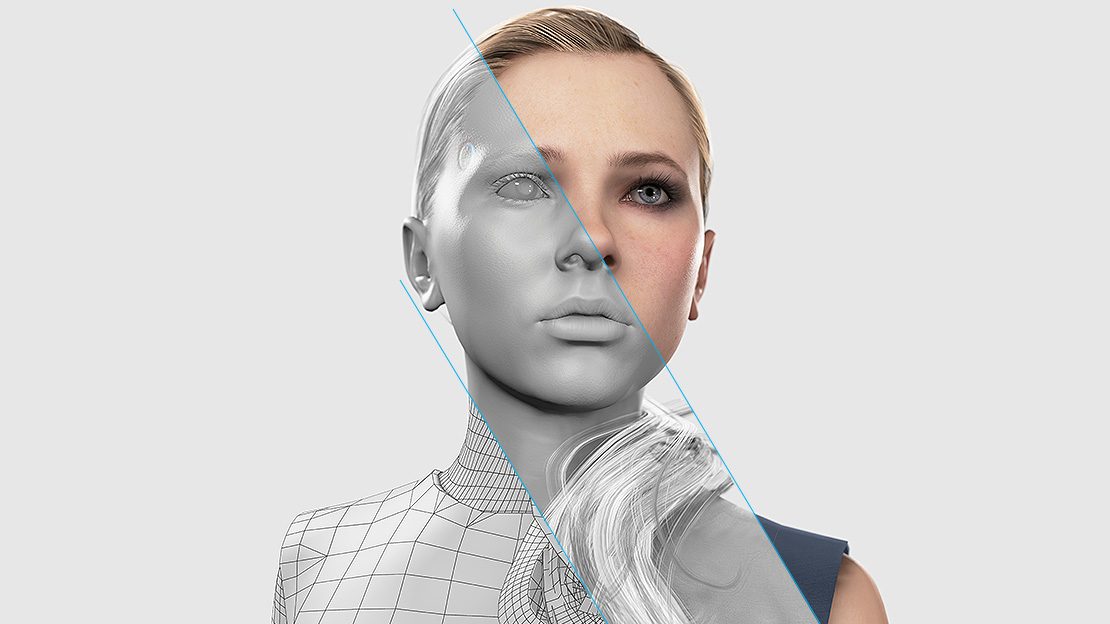
Knowing that we have three actresses who have played Chloé depending on the situation, we had to find technical tricks to make sure that it still looked like the same character on screen. Between Gabrielle Hersh, Barbara Scaff, and Alexandra Pic, we had to rework some of the animations to keep the expressions of the original actress, Gabrielle Hersh, as much as possible, by forcing our tool to work from this data to adapt it to Barbara Scaff’s acting work and then Alexandra Pic’s voice. Without this, the Chloe who appears in the menu would have kept Barbara’s mimics, in favour of those initially proposed by Gabrielle, for the Kamski scene and the trailer.
In terms of work, all these iterations represent a relatively short time: once the motion capture data had been readjusted and finalized, the complementary work by hand was done mainly on the eyes, since in the menu Chloe looks directly at the camera. To process the hundred or so animations, spread over all the versions of Chloé (menu, Kamski, Musée Grévin, short film, and promotional videos), it must have taken me about three weeks full time.
ABOUT HER QUESTIONS
Julien Colas – Lead Game Building
So, there are 13 questions, but we didn’t want to impose the questionnaire; you answer if you want to. Chloe asks each question three times in a row, and if she doesn’t get an answer, she doesn’t propose it anymore and moves on to another question during the next three visits, and so on. However, it is always possible to answer them later by going to the dedicated menu. The questionnaire is divided into two parts:
- 10 questions in the first part, which do not spoil the game;
- 2 questions in the second part, which can only be answered once the game is over;
- 1 question that can only be asked once the game is over and if Kara was present in the Crossroads scene.
From a technical point of view, it wasn’t a huge challenge, but we had to manage several cases:
- if the person plays the whole adventure in one go, without ever going back through the menu, the questionnaire goes directly to questions 12 or 13;
- if Chloe is let go at the end of the game, she is no longer there to ask the questions the following times;
- If the condition for accessing the last question is not met, she returns for the next game;
- if the questionnaire is launched before Chloe has had a chance to propose it.
Knowing that Chloe regularly launches sentences if we stay on the menu, we also had to make sure that we paused the questionnaire if necessary.
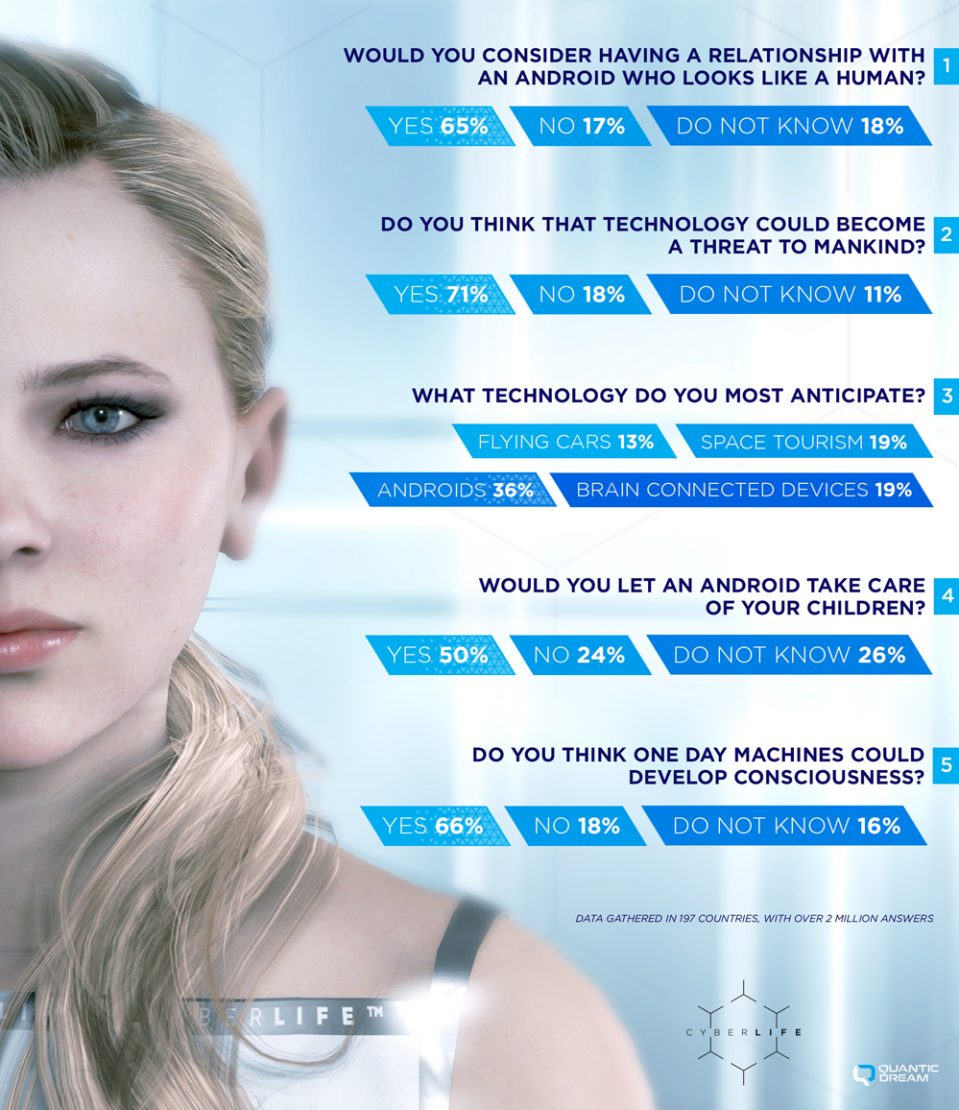
ABOUT HER INTRO SCENE
Maxime Brochen – Lead Camera Artist
For Chloe, the idea of the direction was to find what was the DNA of Quantic Dream, namely a close-up on the emotion of the character. At the time, we had done this on the loading screens of Heavy Rain: just the playable character in close-up, with his facial expressions. The effect was striking: you really had the impression of being in front of a living, expressive actor. It therefore seemed logical to us to adopt this idea again for Chloe, who by virtue of her android condition in the context of the game, had to show a human fragility and authenticity.
Paradoxically, the camera that followed her was totally automatic: we couldn’t maintain a fixed shot at such a scale without resorting to procedural targeting, i.e. automatic framing of the camera: she had too many expressions and micromovements that made her go out of the frame. So, we decided that the camera would follow Chloe’s nose, no matter where she moved. This resulted in a rather amusing bug: when the player released Chloe, the character would leave the frame, leaving just an empty background. Naturally, the camera just kept going, and kept following her too! And of course, we corrected that immediately!
